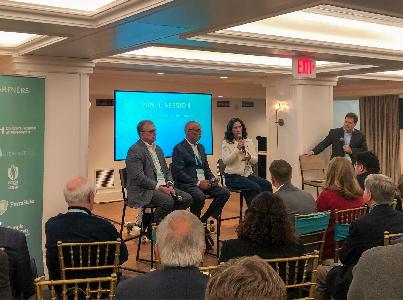There are no boxes of yellowed, brittle paper in Samip Mallick‘s Chinatown office. No rows of bookshelves full of history, no faded photographs in acid-free binders. Mallick runs the country’s first South Asian American archive, but it’s a new kind: it only exists online.
The South Asian American Digital Archive (SAADA) is unique for two reasons, according to Mallick. It’s completely digital, while most archives (The National Archives, Temple University’s Urban Archives, etc.) exist in a physical space, and it does not take ownership of any of its more than 1,300 pieces of history. That way, families can hold on to their photographs and newspaper clippings. They don’t have to relinquish control of them to SAADA.
Mallick, 32, cofounded the archive in 2008 when he was working at the University of Chicago. A first generation Indian American whose parents emigrated from India in the 60s, Mallick said he realized that South Asian American history wasn’t being documented anywhere. It played out even in his own life.
“It’s just not a story I learned about at all,” he said, speaking of the history of South Asians in the United States.
He began working on the archive full-time in 2012, around the same time he decided to move to Philadelphia, a place, he says, that has “history everywhere you turn.”
Today, the archive traces history through items like a 1883 letter from Anandibai Joshee, the first Indian American woman to receive a medical degree in the United States, in which she requests admission to what would become Drexel University, from where she eventually graduated, and letters from Indian revolutionary Har Dayal that were previously only accessible through Penn’s archives.
Why go exclusively digital? Access was a driving factor, Mallick said.
“We don’t want to monopolize these histories,” he said, adding that more than half of the archive’s traffic comes from outside the U.S.
The digital platform also allows teachers, researchers and documentarians to use the archives, as well as helps the archive chronicle what’s happening today, in a world that’s “born digital,” he said.
Join the conversation!
Find news, events, jobs and people who share your interests on Technical.ly's open community Slack

Philly daily roundup: Women's health startup wins pitch; $204M for internet access; 'GamingWalls' for sports venues

Philly daily roundup: East Market coworking; Temple's $2.5M engineering donation; WITS spring summit

Philly daily roundup: Jason Bannon leaves Ben Franklin; $26M for narcolepsy treatment; Philly Tech Calendar turns one

